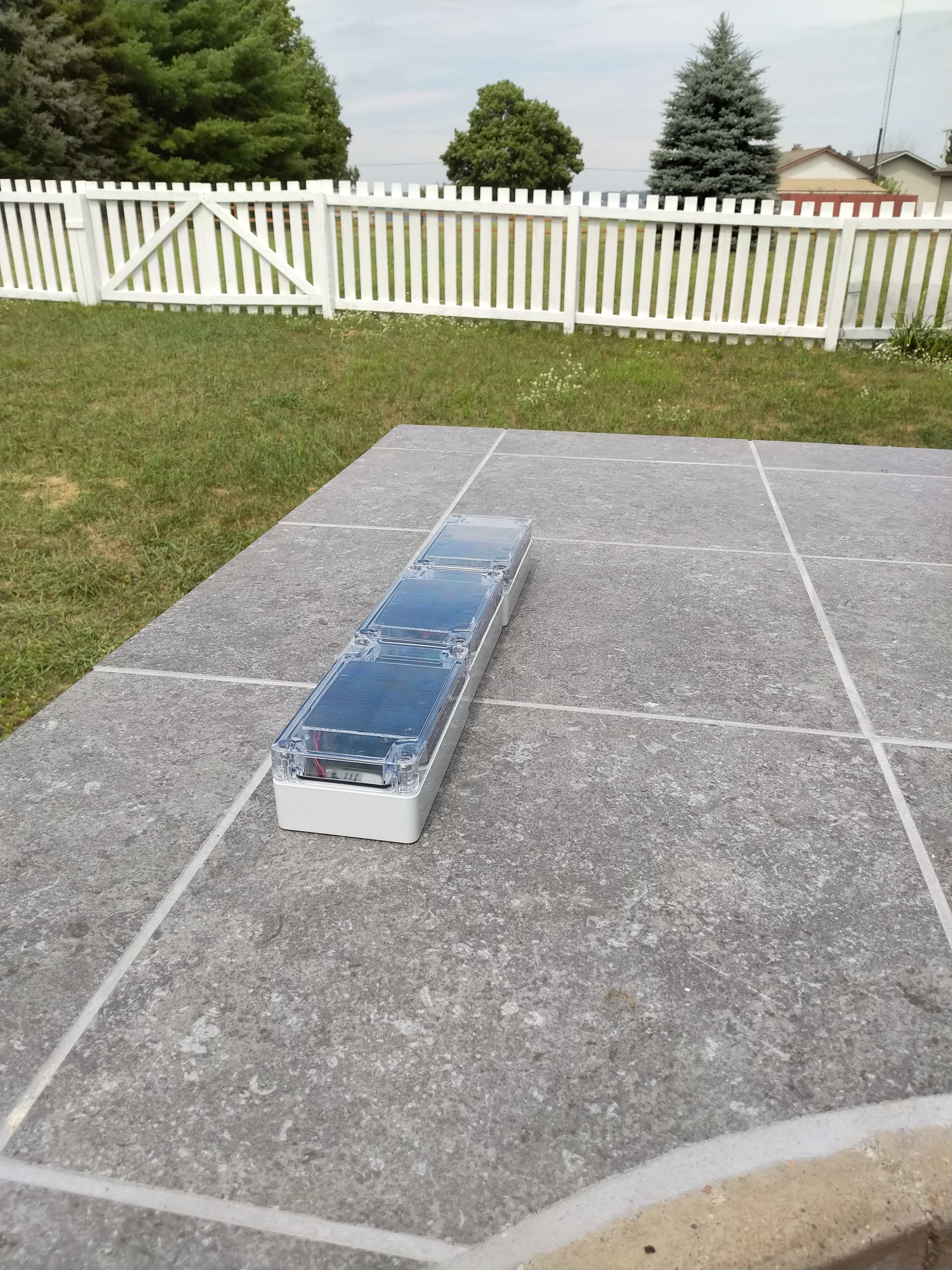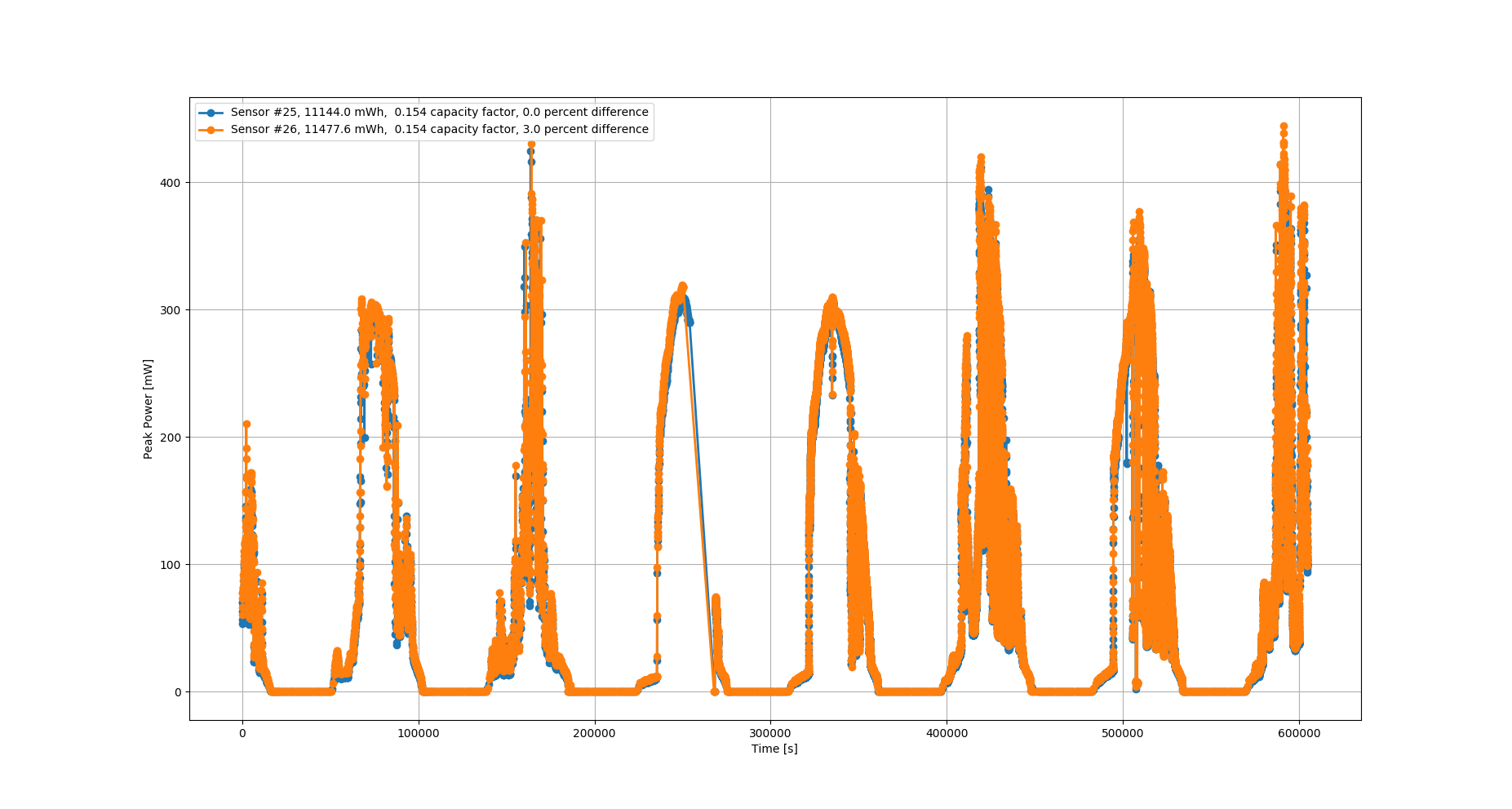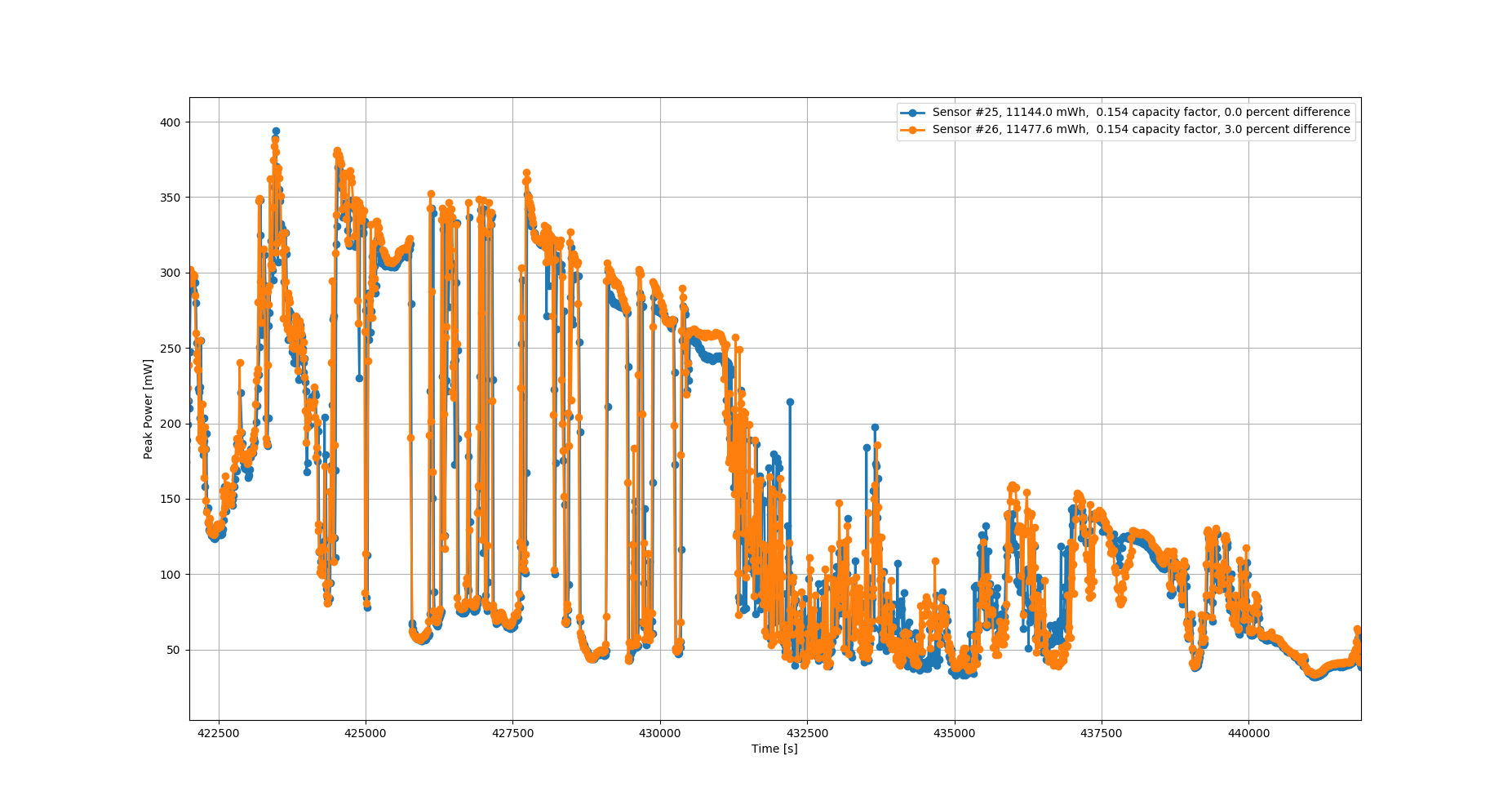After good success of the new design revision with entirely sealed enclosure, I decided to build a small batch of 10 units for testing all over and comparison of results between units. I again used JLCPCB to build 10 assembled devices. I added the ESP32 module by hand, and hand-soldered the solar panel and battery connectors. They all came together nicely. The picture below shows 3 of the 10 units.

The picture below shows the inside of the device. The PCB quality is functionally OK, but the silkscreen is certainly lacking and was peeled off before I received them.

To test the devices against each other, I set up two of the new units outside right next to each other.

For the test, both ran for 7 days straight, with a mix of sunny and mixed cloudy days in north-west Michigan. About halfway through, I took both units briefly inside to reprogram them. Initially, they were set up to take a measurement at 60 second intervals during sufficient sunlight. To get better data on the match between both units, I changed it to measure at 10 second intervals.
The plot below shows the measurements of the two new units over the full test. The gap around halfway is due to the reprogramming. Overall, the total energy estimates for the two units are within 3% of each other. Perhaps more importantly, they estimate the same capacity factor, which is important for evaluation of the use of solar energy.

Looking at one cloudy day's worth of data with both devices measuring at 10 second intervals. The two devices match nicely.

Zooming even further, we can see both devices track well even during short periods of cloud cover.

Finally, one major issue with the last minor revision was that it had no working temperature sensor. This new design has one, which is used to determine when it is safe to charge the lithium-ion battery onboard. Both devices match well, and it is clear that these units get very hot in direct sunlight, so much so that they are not charged mid-day.

Overall, I am very happy with this new small-batch order. We will be setting them up with friends and family around the country and generate even more test data soon.
Discussions
Become a Hackaday.io Member
Create an account to leave a comment. Already have an account? Log In.